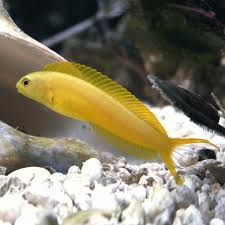The Dragon and Its Relationship with Mythological Elements in Chinese Culture

The dragon, one of the most iconic and powerful creatures in Chinese culture, is steeped in deep mythology and symbolism. It is not only a physical manifestation of divine power and imperial authority but also intricately connected to the mystical and supernatural elements of Chinese mythology. In Chinese culture, the dragon’s significance transcends that of a mere mythical being—it embodies the essence of balance, strength, and cosmic harmony. Throughout history, dragons have been interwoven with various mythological themes, illustrating their symbolic importance in shaping Chinese identity, spirituality, and worldview.
This article explores the complex relationship between dragons and mythological elements in Chinese culture, investigating their role in mythological narratives, their connection to the Five Elements, and their influence on other legendary creatures and deities. We will also explore the role of dragons in the balance of nature, the cosmos, and the divine, shedding light on their symbolism in key aspects of Chinese civilization.
The Dragon as a Symbol of Power and Celestial Harmony
Dragons in Chinese mythology are often regarded as powerful, benevolent, and auspicious creatures, in stark contrast to the fearsome and destructive dragons seen in Western mythology. The Chinese dragon is not merely a mythical beast; it embodies cosmic balance, spiritual transformation, and divine authority. The dragon’s importance is reflected in its association with the Emperor, who was considered the “Son of Heaven.” The Emperor’s connection to the dragon symbolizes the legitimacy of his rule, based on divine right and the cosmic harmony between Heaven and Earth.
In the early Chinese myths, the dragon was a symbol of natural forces, representing not only power but also the creative energies of the cosmos. Dragons were often depicted as being able to control the weather, specifically rainfall, and their divine power was invoked during times of drought. This made them key figures in agricultural rituals, which sought to ensure the prosperity of crops. In these rituals, the dragon was seen as a heavenly creature that could bridge the gap between the divine and earthly realms, channeling celestial energy to maintain harmony and order on Earth.
Dragons and the Five Elements
One of the most important mythological aspects of the dragon in Chinese culture is its relationship with the Five Elements (Wu Xing), which form the basis of traditional Chinese cosmology. The Five Elements—Wood, Fire, Earth, Metal, and Water—are central to understanding the dynamics of nature and the universe. In Chinese thought, the Five Elements are seen as interconnected and interdependent forces that govern life, health, and the balance of all things.
The dragon’s connection to the Five Elements is most strongly linked to water and the flow of rivers, seas, and storms. In Chinese mythology, the dragon is often described as a water deity, capable of summoning rain and controlling water sources, making it a symbol of abundance and prosperity. Water, in the context of the Five Elements, represents nourishment, adaptability, and the ability to bring life to the land. The dragon’s ability to control water reinforces its role as a symbol of balance in the natural world.
The dragon is also associated with the other elements through its presence in various cosmic cycles. For instance, the dragon’s fire breath is linked to the Fire Element, symbolizing transformation, vitality, and energy. In some myths, dragons are shown to battle other creatures or forces, illustrating their role in maintaining equilibrium between opposing forces in nature. This connection between the dragon and the Five Elements reflects its central role in Chinese cosmology, where dragons are viewed as protectors of balance and harmony.
The Dragon and Other Legendary Creatures
In Chinese mythology, the dragon does not exist in isolation. It is part of a rich tapestry of mythical beings that interact with one another to shape the cosmic and terrestrial order. One of the most notable relationships is between the dragon and the phoenix. The dragon and phoenix are often paired together as complementary opposites, symbolizing the union of masculine and feminine energies, the yin and yang of life. The phoenix, a symbol of rebirth and immortality, represents the feminine principle, while the dragon embodies masculinity and power.
The dragon’s relationship with the phoenix can be found in many aspects of Chinese art and folklore. These two creatures are often depicted in harmony, surrounded by clouds, and are symbolic of the emperor and empress. Together, the dragon and phoenix represent the unity of the imperial couple and their shared responsibility for maintaining the welfare of the nation. This pairing also symbolizes the ideal balance between heaven and earth, with the dragon rising from the depths of the oceans and the phoenix soaring to the skies.
Additionally, dragons in Chinese mythology are frequently associated with other creatures, such as the qilin (a mythical hooved chimerical creature) and the tortoise. The qilin, which represents peace, prosperity, and good governance, is often depicted as a dragon-like creature. The tortoise, symbolizing longevity and stability, is another creature frequently seen alongside dragons. These relationships illustrate how the dragon’s power and influence extend beyond its own physical form and into a broader mythological context, interacting with other symbols of good fortune and celestial order.
The Dragon’s Role in the Heavenly Realm and Its Connection to Chinese Deities
In Chinese mythology, the dragon is not only a terrestrial and aquatic creature but also plays an essential role in the heavenly realms. It is often depicted as one of the many celestial beings who serve the Jade Emperor (玉皇大帝), the ruler of Heaven in Daoist cosmology. The dragon’s role as a servant to the Jade Emperor is integral to its symbolism as a divine intermediary, responsible for ensuring that the laws of Heaven are enacted on Earth.
The dragon is also linked to several deities in Chinese religious traditions. For example, in Taoism, dragons are often associated with the Dragon King (龙王), a deity who rules over the seas and waters. The Dragon Kings are believed to control the waterways, overseeing rivers, lakes, and oceans. As protectors of water and fertility, they are often worshipped by farmers and fishermen who seek blessings for abundant harvests and favorable weather conditions. The Dragon Kings, in their various regional forms, are integral to Chinese mythology, embodying the divine aspect of nature’s forces and their ability to protect and provide for human beings.
Moreover, dragons are frequently mentioned in Buddhist texts, where they are depicted as protectors of the Dharma (the teachings of the Buddha). In these contexts, dragons are not only benevolent and powerful but also spiritual beings who help preserve cosmic order. The dragon’s association with Buddhism highlights its dual role as both a guardian of the material world and a protector of spiritual truth.
Dragons in Chinese Folklore and Tales
Throughout Chinese folklore, dragons appear in many famous myths and legends. One of the most popular and enduring stories is the legend of the Dragon Gate. According to the tale, a carp that swims up the Yellow River and leaps through the Dragon Gate waterfall will transform into a dragon. This myth symbolizes perseverance, transformation, and the rewards of hard work. The story of the Dragon Gate serves as an allegory for individuals striving to overcome obstacles and achieve success. It underscores the dragon’s role as a symbol of transformation and ascension, where one can reach greater heights by following a path of virtue and self-improvement.
Another well-known myth is the story of the Dragon Boat Festival (Duanwu Festival), which commemorates the poet Qu Yuan, who drowned himself in the Miluo River in protest of political corruption. In this story, the dragon represents the protective spirits of the river who guard the waters and the souls of the departed. During the Dragon Boat Festival, dragon-shaped boats race through rivers to honor Qu Yuan and ensure that evil spirits are driven away. The dragon in this context symbolizes protection, sacrifice, and the connection between the living and the deceased.
The Dragon’s Modern Influence
In contemporary China, the dragon continues to be a powerful symbol in popular culture and art. While the dragon’s traditional associations with power, protection, and prosperity remain, it has also evolved in modern depictions. In popular media, such as films, video games, and literature, dragons are often depicted as fierce, majestic, and magical creatures with abilities that transcend the boundaries of reality. This modern interpretation has allowed the dragon to become a global icon of Chinese culture, influencing artistic expressions worldwide.
Furthermore, the dragon’s role in Chinese festivals and celebrations, such as the Chinese New Year and the Mid-Autumn Festival, reinforces its ongoing significance as a symbol of good fortune, renewal, and the cosmic cycle of life. Whether through the majestic dragon dances performed during festivals or the images of dragons seen on modern products and designs, the creature remains an integral part of both ancient and contemporary Chinese culture.
Conclusion
The dragon’s deep connection to Chinese mythology, philosophy, and culture makes it one of the most important and revered symbols in Chinese civilization. From its relationship with the Five Elements to its interactions with legendary creatures and deities, the dragon embodies the harmony of the natural and spiritual worlds. Its role as a protector, a symbol of transformation, and a bridge between Heaven and Earth underscores its enduring significance in both ancient and modern Chinese culture. The dragon remains a timeless symbol of power, prosperity, and cosmic order, woven into the very fabric of Chinese identity and artistic expression.


